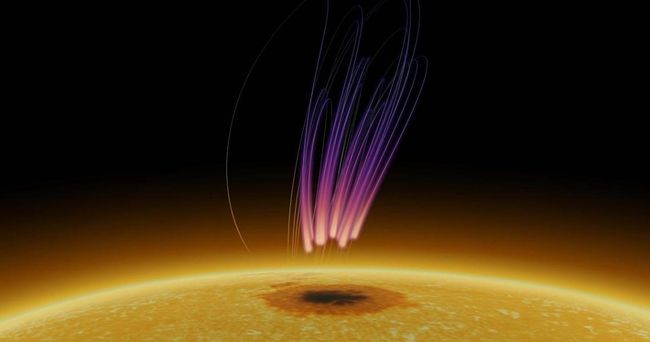Scientists have observed long-term emission of radio waves arising above sunspots and reminiscent of the “northern lights” on Earth
A sunspot is not just an area on the Sun’s surface with a relatively cool temperature. This is an area where the magnetic field is especially strong. A recent study by a team of astronomers at the New Jersey Institute of Technology’s Center for Solar-Terrestrial Research (NJIT-CSTR) found that long-lasting polarized radio bursts occur over such sunspots, lasting for several weeks.
These radio wave bursts are reminiscent of the phenomena we can see as the “northern lights,” or aurora, on Earth and other planets in the solar system, including Jupiter and Saturn. On Earth, “auroras” arise under the influence of solar activity, which is accompanied by emissions of charged particles interacting with atoms in the atmosphere. These particles, especially accelerated electrons, produce intense radio emissions at certain frequencies.

Radio sunspot aurora offers new insight into the interaction of energetic particles and magnetic fields
However, the observed radio wave bursts over sunspots have their own characteristics. First, they are long-lasting, lasting several weeks, which is different from regular solar radio bursts, which last for a few minutes or hours. Secondly, their spectrum differs from previously known radio disturbances.
The team believes that the reason for these phenomena lies in the capture of high-energy electrons by the magnetic fields of the sunspot, which interact with the cooler and more intense magnetic regions of the sunspot, creating a favorable environment for the occurrence of magnetic resonance electron cyclotron maser emissions (the process of generating electromagnetic waves in the vicinity of sunspots). ). Magnetic resonance emissions occur when energetic electrons, in the presence of a strong magnetic field, experience a resonant interaction with the magnetic fields of a sunspot. Magnetic resonance occurs as a result of the fact that the frequency of an electron’s revolution around a magnetic line corresponds to the frequency of electromagnetic waves generated by this process. A cyclotron maser is a phenomenon of amplification of electromagnetic waves in the presence of a strong magnetic field. In the context of sunspots, this means that electrons, under the influence of the sunspot’s magnetic field, are accelerated and emit electromagnetic waves in certain frequency ranges. This phenomenon plays a significant role in the formation of observed radio wave bursts over sunspots.
The discovery is of great importance for understanding the processes occurring in the magnetic fields of stars. It can contribute to the development of new models and theories because it offers new evidence for the interaction of energetic particles and magnetic fields in the vicinity of sunspots.
New observations may help link magnetic phenomena on the Sun with similar phenomena in the atmospheres of other stars. Such a comparison may lead to a revision of existing models of stellar magnetism and the study of its physical nature.




